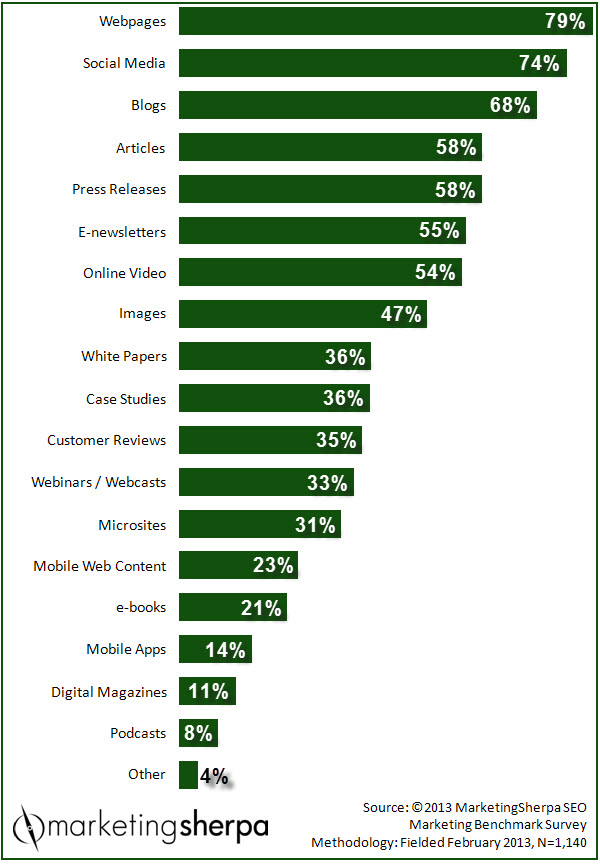You’ve no doubt heard folks bandying about the latest buzzword: “content marketing.” There’s a reason it’s buzz-worthy. Without content, you’ve got nothing. You’re just a box with nothing inside. Kids like to play with boxes; most folks — when they grow up — are looking for something of value inside the box. At the same time…
The box matters.
How attractive is your box? How enticing? How easy is it to open? Is it a box your constituents will want to save? Repurpose? Share with their friends? What’s the value your folks can get from your box? In The Best Content Marketing Formats marketing expert Heidi Cohen reviews the way professional marketers think about the different boxes they use to deliver content. You should think about them too.
The box you choose will depend on your (1) resources and (2) objectives.
(1) RESOURCES
How much time and money do you have to put into creating and filling your boxes? Some are easier to build and fill than others. What are you trying to accomplish with your content marketing? Different formats work best for different objectives.
In a 2013 SEO Marketing Benchmark Survey by MarketingSherpa, marketers were asked about where they produce content for search engine optimization. This gives us insight into how marketers think about content, and it’s worth a gander.
- Close to 80% of marketers cited websites (or webpages) as their preferred content platform. This makes sense since websites (and, I would argue, increasingly blogs – which were selected by 68% of marketers) provide a hub for your organization’s content.
- Over 70% selected social media as a preferred content platform. If you want to see which platforms are favored, check out Social Media Examiner’s 2013 Social Media Marketing Industry Report. 14 social media platforms are rated, with blogging, Google+ and Facebook topping the list, followed closely by LinkedIn, YouTube, Twitter and Pinterest.
- Articles, enewsletters and press releases all weigh in at over 50%.
- Online video also crossed the 50% threshold, with images being close behind.
- While mobile websites (23%) and mobile apps (14%) ranked relatively low in the SEO survey, Heidi Cohen notes that these content formats are critical for consumers-on-the-go. She notes: If your business isn’t visible on a smart phone or tablet, you risk being left out of the consideration set.
 How easy is it to build the box of your choice? If you decide you want to build a mobile-friendly website, is this something you know how to do? Do you have the skills in-house, or would you have to outsource? What might be easy for Starbucks or Coca Cola or American Red Cross might be difficult for you.
How easy is it to build the box of your choice? If you decide you want to build a mobile-friendly website, is this something you know how to do? Do you have the skills in-house, or would you have to outsource? What might be easy for Starbucks or Coca Cola or American Red Cross might be difficult for you.
That’s why it’s so important to be clear about your objectives. No matter how difficult, if you really need a mobile website because 80% of your constituents access their email primarily from their phones, then (difficult or not) you’re probably going to want to figure out how to get inside that box – and sooner rather than later. Conversely, if you’ve been putting the bulk of your content creation resources into writing scholarly articles for journals that almost none of your constituents will ever read, then perhaps it’s worth revisiting this strategy.
Here’s what business marketers in the Marketing Sherpa study said about different content marketing formats:
Easy to create:
- Over 70% picked images. A lot of this is photographs, including snapshots that can be created by your constituents. The great thing about building a “box” out of photos is that as humans we’re wired to look at other humans. Just make sure to include captions or other related text so that your images are searchable. Infographics are images as well, but do take more work.
- 66% picked press releases. Note, however, that just because something is easy does not necessarily mean it’s effective. Increasingly for nonprofits press releases have become an ineffective way of building relationships with the media (see The Press Release that Made Me Cry ).
- 57% picked web pages and social media. Again, just because it’s easy to slap up a Facebook account does not mean this is the box for you. Unless you have an engagement strategy, and a system in place to measure that engagement, you’re going to end up with nothing more than a pretty box. You have to be strategic about what you’re putting in the box, who’s opening the box, and whether what they find there will be something they consider to be of value.
Very difficult to create:
- Over 25% picked mobile apps. So, be cautious if you have a board member suggesting that you go this route. You still have to get folks to download and use them. Otherwise you’ve got an unopened box or an opened box and a discarded toy.
- Over 25% picked video production. It’s likely they were thinking about high quality videos, which can be time-consuming and expensive. With the increasing capability of smart phones to create perfectly acceptable, compelling videos that can be posted to YouTube, nonprofits should not be daunted by this finding. And YouTube is the second largest search engine after Google. Folks will find you there.
What do you need your box to do? The Marketing Sherpa study I’ve referenced throughout this article collected data relative to the goal of search optimization. If marketers had been asked which format they preferred to acquire new customers, close sales or retain existing customers, their answers may have been different.
Beyond ease of creation, you’ve got to think about what you want to accomplish. As easy as it is to create a taped-together paper box, it may not hold the weight of what you need it to carry. So what’s the point?
A facebook page that drives no traffic to your website and doesn’t convert into desired actions (e.g., purchases of services or donations) isn’t really effective. A blog that merely reports data and announces the hiring of new staff is probably not going to yield great rewards because it isn’t answering supporter questions or providing them with anything of real value. So why should they open it?
It’s also important to remember that not all content marketing “boxes” are created equal. Some are weightier than others. I happen to be very ‘hot’ on Pinterest for nonprofits, but I’d never suggest substituting Pinterest for your website or a blog. The former is great for building constituent relationships; the latter is a workhorse to create your brand, drive traffic and establish thought leadership. One has more trending content; the other is more evergreen.
If you don’t have the right box, you can’t effectively deliver the gift. A wine bottle won’t fit into a ring box. A ring will look lost inside a box designed for a microwave; in fact, it might actually get lost – tossed out while the recipient roots through the Styrofoam peanuts. Don’t let bad things happen to good content for want of the right box.
What’s your favorite content marketing box? Why? Is it because it’s easy to create and fill, or because it’s effective in helping you fulfill your content marketing objectives?
Photo: Flickr cthoyes
Speaking of being hot on Pinterest, if you think this ‘box’ may be useful for sharing some special gifts with your constituents – compelling images, games, products, recipes, craft ideas, donation opportunities, etc., check out my new 39-page “Hop on the Boards’ eBook and Pinteresting Resources Guide. It’s practical, fun and filled with actionable tips. If you don’t agree, just let me know and I’ll do whatever I can to make you happy. I’m generally pretty nice.







